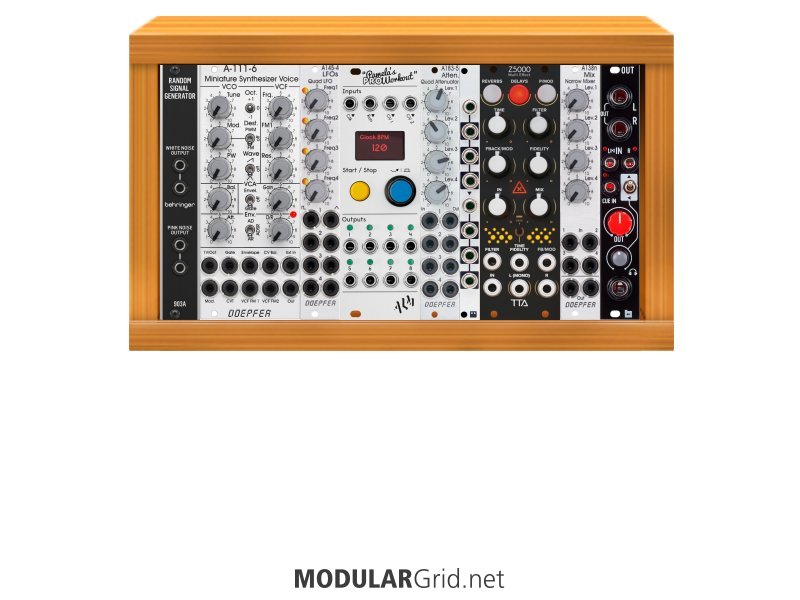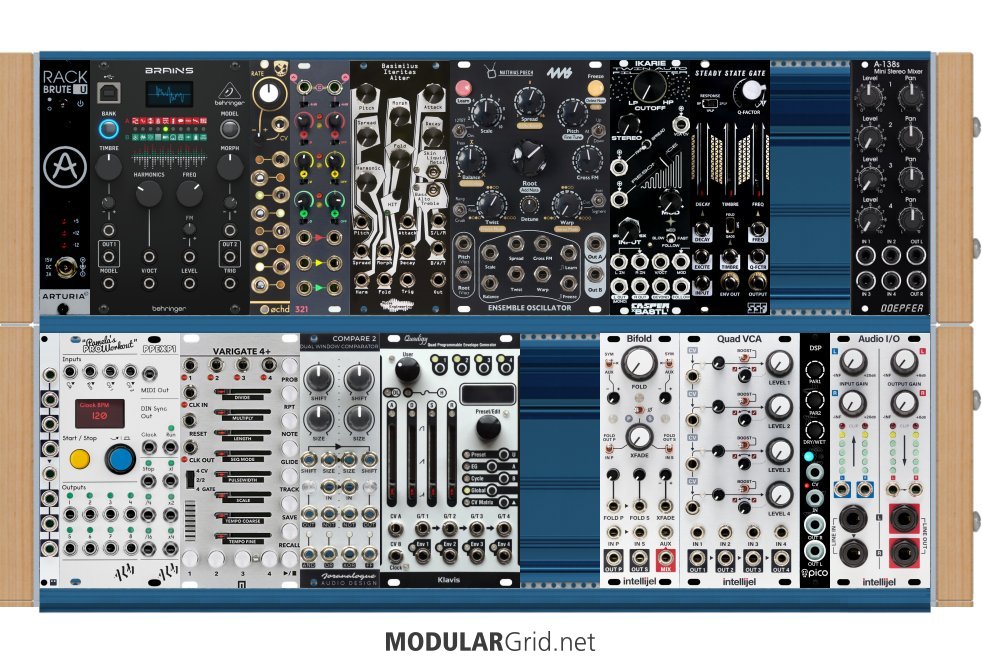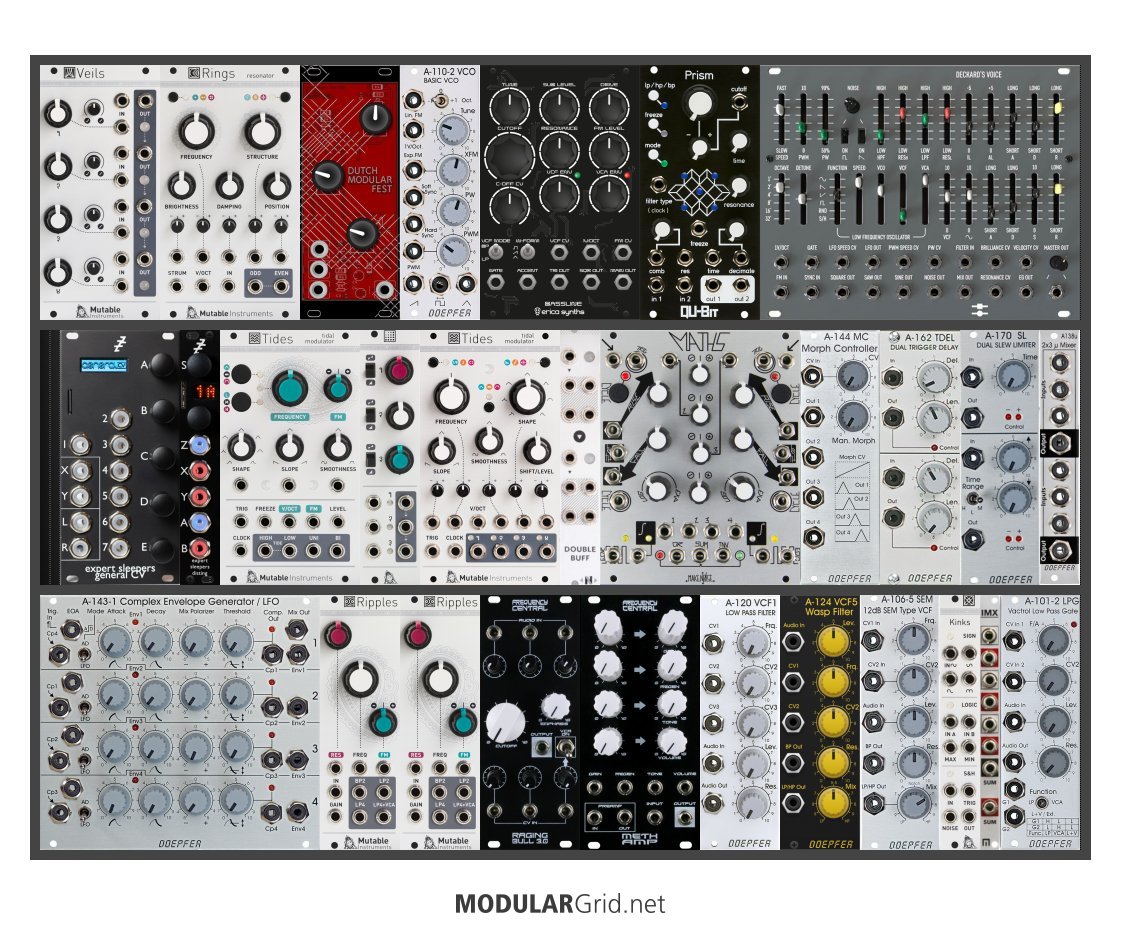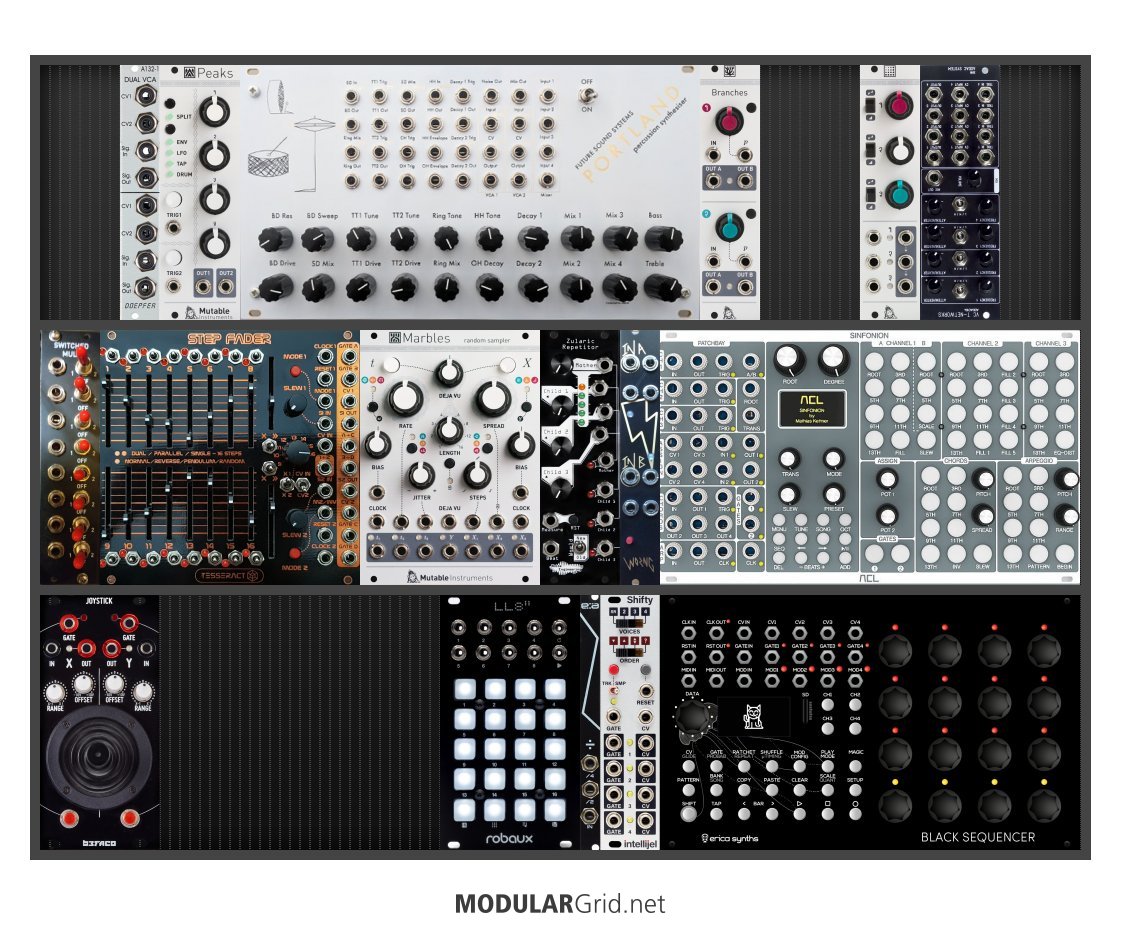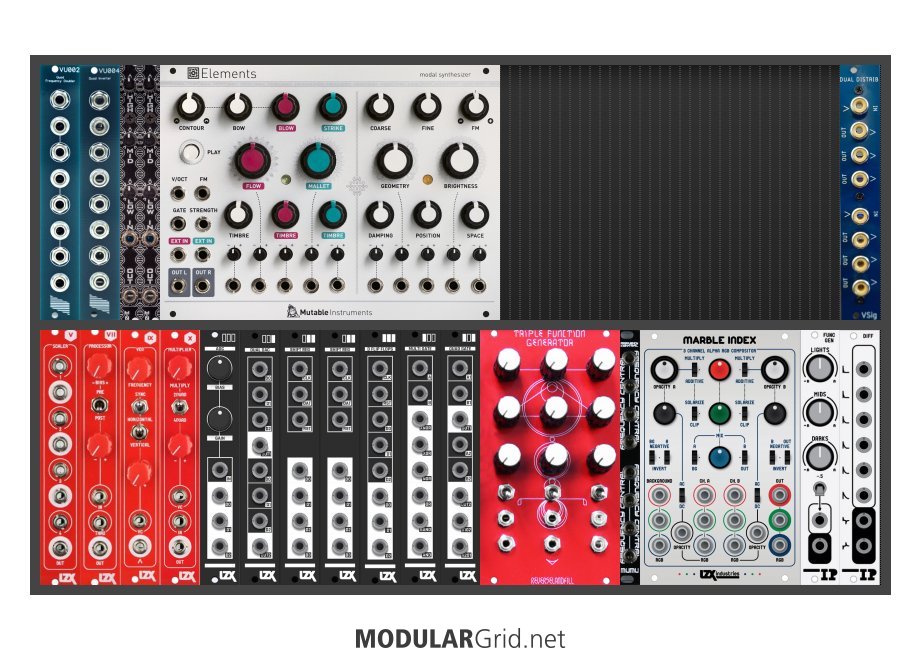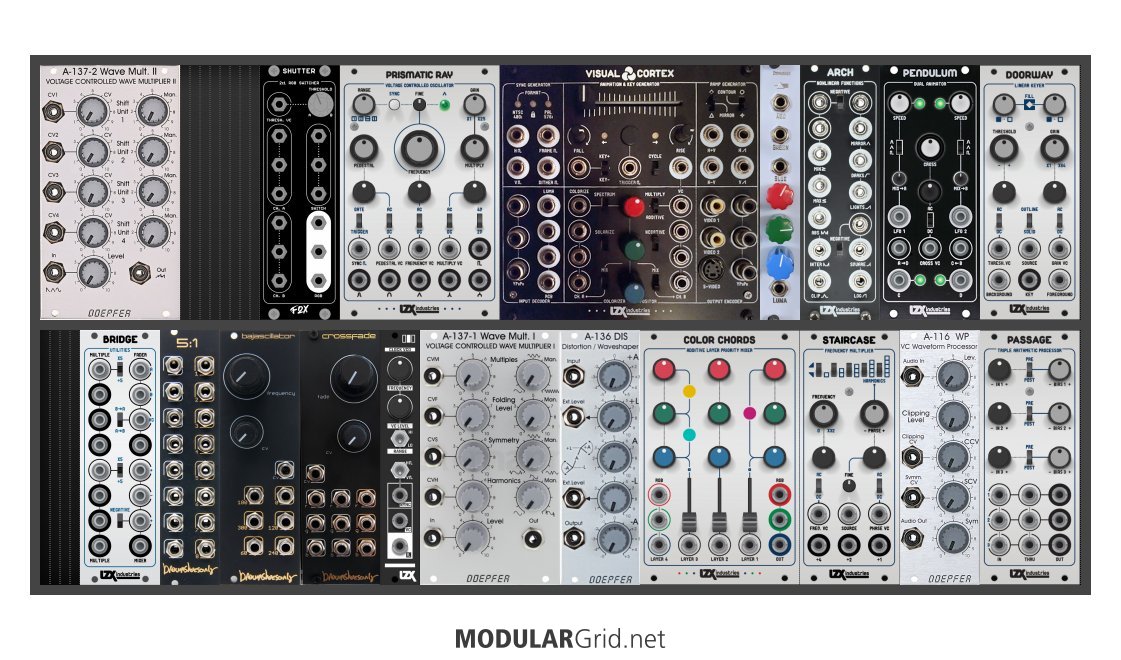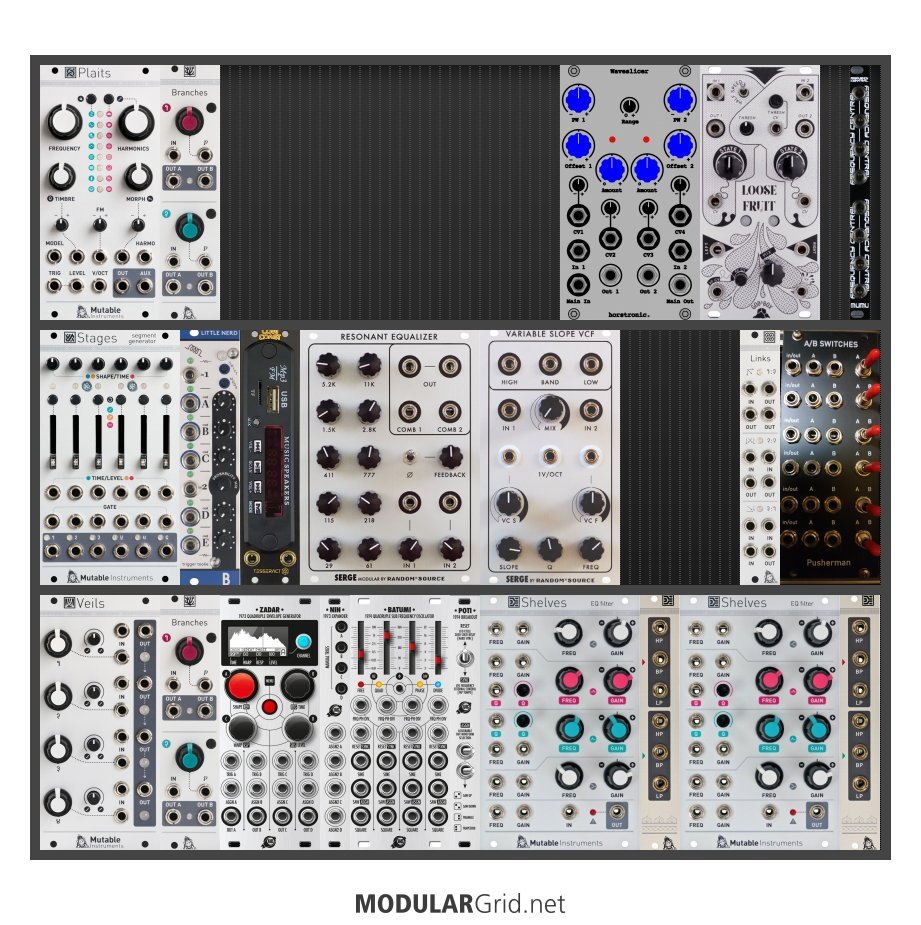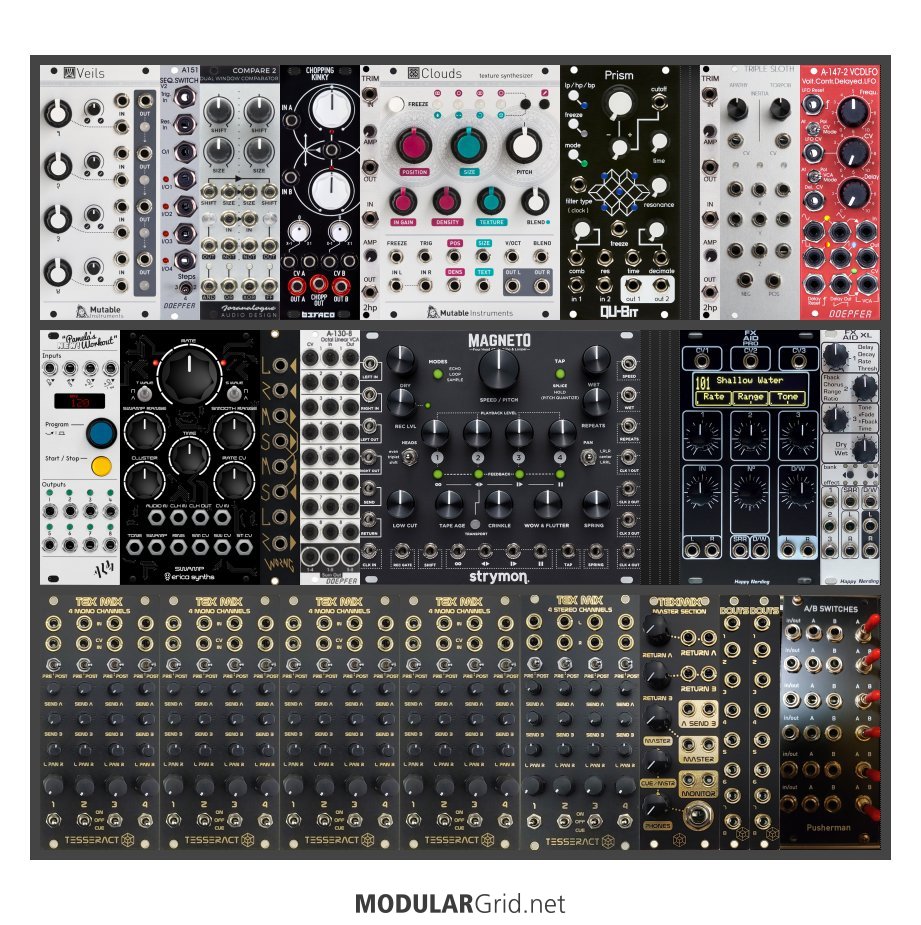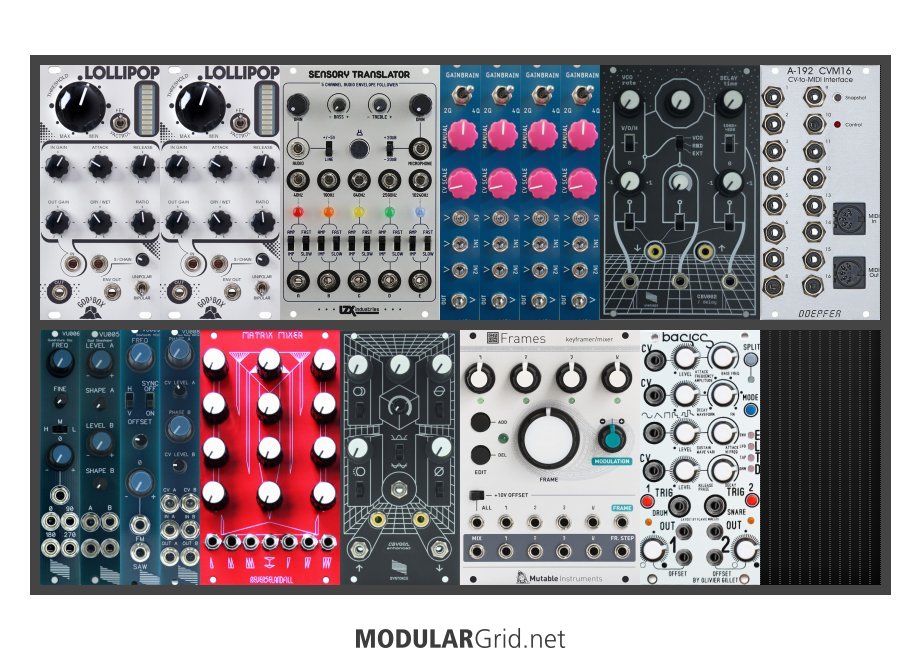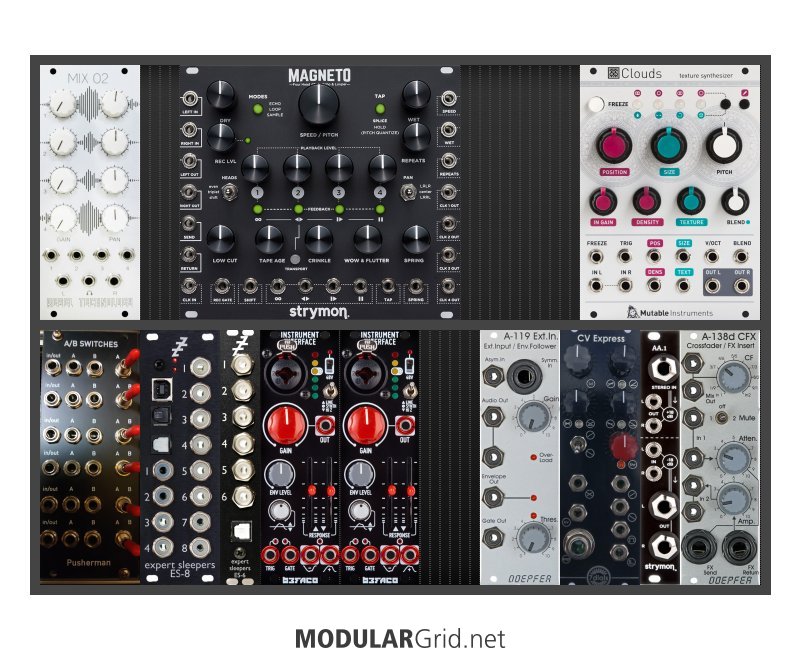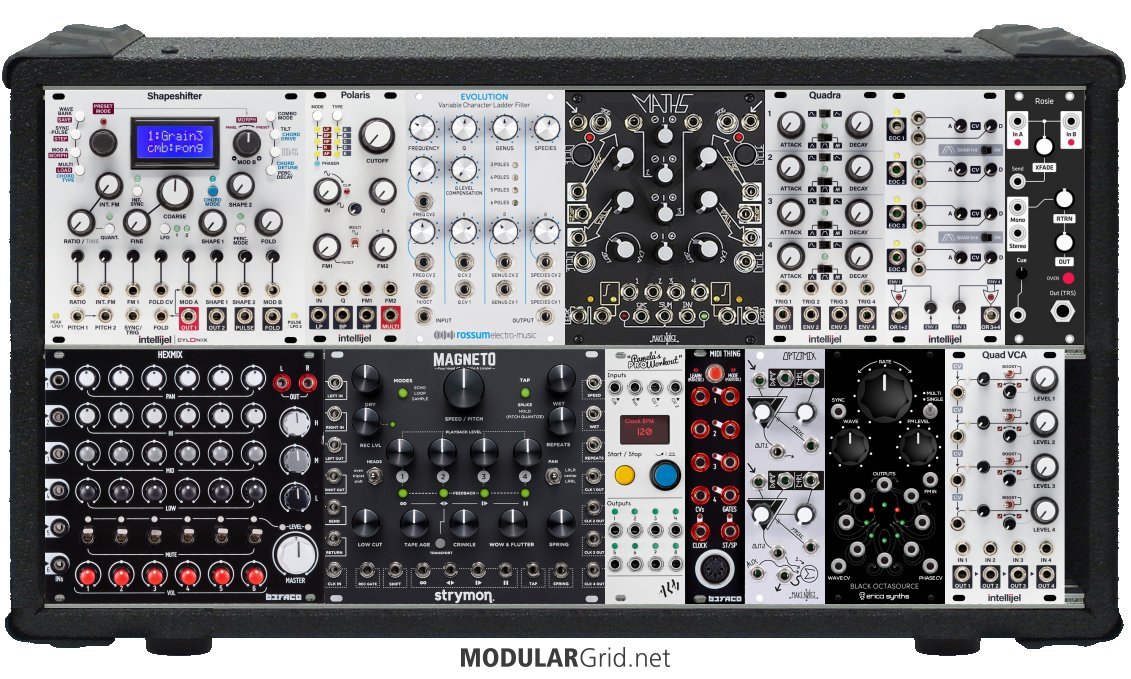Ah, Jim, I'm not surprised you showed up here. You are, after all, one of the most vocal and prominent users in the various threads where Behringer is discussed.
Maybe I am, I don't know - I don't pay that much attention, at least to statistics... but what I'm usually saying is this - it's up to you - but really do you want to give your money to known bigots? do you actually want to put your money towards innovation or towards corporate greed? do you want to buy a product that if it fails will be repaired or just replaced and the failed module end up in landfill?
remember: the misdeeds of the owners of music tech companies are not reported in the mass media - unlike, say, those of movie or rock stars... the masses don't know about them - chances are quite high that a newbie doesn't know anything about the b-company or Synthrotek - or a few other companies in the past... they just see them as another eurorack manufacturer, albeit on the cheaper end of the scale & which they may see as a good or a bad thing...
and will some people "judge you" for your choices relating to these questions? - yes of course they will - as you are for my pointing out of these facts in order to inform people so that they can make informed choices for themselves - as you will be to some extent for everything, from your car, to the clothes you wear, to how your hair is cut, to your accent etc - but how much you care about that and how you deal with it is your issue
see no evil, hear no evil, speak no evil - begets evil, does it not!
I've been around long enough to know that often buying the cheapest option means buying again and again, whilst buying a more expensive (and robust) item can mean that the item is repaired and therefore lasts longer... and ends up cheaper in the long run...
And, more importantly, at least to me is that people have the right to choose where their money goes... I, personally, want as little of my money as possible going into the hands of bigots (amongst others that I won't go into here - as it strays towards both politics and religion)
if the b-company stuck to original designs, cloning out of production synths (with a little extra thought put in - v triggers ffs!!) and modules, improved their quality slightly (nuts on jacks for instance) and minded what Uli says publicly etc - then I wouldn't have a problem with them at all, in fact I'd be singing their praises... as it is though they are effectively bullies & I've never liked those...
I see you cherry-picked the low hanging fruit and chose to focus on the exaggeration part of my comment;
then don't leave low hanging fruit or exaggerate - I try my best not to...
I will admit that it is possible or even probable that there are certain relative newcomers to the world of music gear who have not yet stumbled upon any of the countless discussions about Behringer.
It's an absolute certainty - I have seen it many, many times!
My apologies, I understand that in this context, I should be more careful of my semantics and avoid any such tools as exaggeration, extrapolation or hyperbole as that will quickly be used in an attempt to invalidate the rest of my points.
Indeed - it's a shame you didn't follow your own advice for the rest of your post... especially the following paragraph!!
Clearly, some people believe that it's so important to make certain that all potential users or purchasers are "informed" that they continue to beat the dead Behringer hate horse at every opportunity - nay, not just beating, grinding said horse to powder in which they revel like bathing chinchillas. Meanwhile, the occlusion of cognitive dissonance continues.
hyperbole... and showing off your vocabulary... Keep it simple, stupid - this is an international forum and not everyone will understand what you are saying!! again - the b-company are effectively bullying smaller companies by copying their products - the small companies can't afford to defend themselves in court - the b-company would bankrupt them without a thought... so the only way to stand up to them is to point people in other directions - and for good reason - and sometimes it'll be succesful and other times it won't...
as for "the occlusion of cognitive dissonance" - this is endemic and we are all to a certain extent guilty of it, including you (& me) - because all that really means is that we choose to see and believe what we want to see and believe because it's convenient - not necessarily because we are right - remember: no one thinks they are evil - but at least some of us are!
Take, for example, a comment in the thread about Four Play: "If I saw this module in an artist's rack I'd never buy another album from that artist. Art means nothing without ethics." Does this person hold these values across the board? Do users who make such comments also refuse to own any other product (music related or otherwise) made by companies who operate in the exact same way? If a painter uses cheap acrylic paint and pre-stretched canvases marketed under store brand in mega-corporate chain craft store known for importing mediocre quality products manufactured under dubious work conditions, shall we refuse to cast our gaze upon their works and shun them as lesser artists because they should be using expensive products crafted by small, local artisans?
well... that's definitely not a quote from me... and as such, I can't speak for that person... but there are issues here...
1 the provenance of the canvas/paint is much less obvious than that of the "offending" module - even if the artist posted their workspace in a similar way to the musician - the tubes of paint and canvases are less likely to be branded or be as distinctive... and therefore not so blatantly obvious
2 there's a big difference between passive and active consumption - the act of viewing a painting is more akin to listening to a piece of music on the radio or in a bar than it is to actually buying an album, whether it is digital or physical
3 most consumers of art (in whatever medium) are not aware of or interested in the tools/processes/time etc that are used to create the art... they only experience it as a delivered artwork - those of us that are aware have a right to be more discerning, if we choose to be... the only people who will take any stock of this are those who also practice in the same art form and often not then unless they are particularly interested in how a particular piece was made...
4 a lot of people would equate great artist with professional with making money above and beyond the absolute minimum needed to survive - at which point they can afford the nicer tools (and often write them off as business expenses) - I do think this is spurious though - I don't equate popular with good, necessarily, or conversely unpopular with bad - and of course there's no accounting for tastte (mine included) - I may be able to tell that it's well executed - Adele, for example - a reasonably proficient singer - but dreary, formulaic pap for the masses with absolutely no progression and no artistry- just good marketing... sell the same thing again and again - or photo-realistic painters - great draughtsmen, but again nothing to do with actual art...
I think the original point of this thread stands. Most of us aren't here because we want to be inundated with repetitive commentary about why this company or that is evil and should be avoided. Most of us are here because we want practical and accurate information about the functionality of modules we own or are considering. Rather than focus on the debate over how many people are aware vs unaware of the Behringer controversies, why not actually discuss the more relevant points here?
No the original point does not stand at all - it is tantamount to wanting censorship and the subjugation of freedom of speeach... and even worse - the maintaining of your 'freedom of speech' over mine (& others!)... it's like turning a blind eye to poverty, whilst sipping champagne
It's cherry picking what you want others to hear/not hear based upon your world view....
or a review site that only allows positive reviews... despite the fact that some of the things being reviewed are utter crap or have incredibly poor customer service and deserve to be called out as a warning to others...
you can't have your freedom of speech, or expect to have someone defend it, without extending the same courtesy to everyone else, and defending that right - no matter whether you agree with them or not... it's the basic underlying principle of freedom (of speech) - it's a double edged sword - in order for you to have yours, I must have mine too...
otherwise you end up with Farenheit 451 or The Handmaid's Tale being a reality - oh wait a minute we already have to a lesser extent
now in this case there are places where you can have exactly what you want - Modwiggler is an excellent forum for modular synthesis (despite, in my opinion their censorious sidelining of all criticism of the b-company into a singular thread - which I intenesly dislike, but understand due to Uli having threatened to sue gearspace & it's members) - or the b-company forum (where all criticism is deleted) - it's your choice
Another example comes from the Abacus thread: "If you care about the euro community avoid this." Why?
because some of us (hopefully a majority - or at least a substantial minority) would like small companies that are more likely to innovate survive long enough to do so... the chances of the b-company coming up with anything musically (or not, for that matter) innovative are near 0
Maybe some of us could give a rat's tail about the stuck up elitism of the so-called "community" which, while incredibly helpful users are plentiful, seems to be dominated largely by jerks who would snub new users who are dipping their toes into the modular waters with low-investment, low-risk modules that make it easy to get started without spending years researching what modules they need and saving up thousands of dollars.
I've never snubbed new users & I'm definitely not elitist - far from it - but I do really advise at least some research - including the owners of the companies they are buying from & I definitely have pointed new users in other directions - used doepfer modules for instance are not that much more expensive than b-company products and are much easier to resell, I would imagine - therefore being lower risk than even b-company
I also don't recommend the nifty bundle - too small a case, with poorly implemented features and modules that haven't got a particularly good reputation, which may be outgrown almost immediately and difficult to resell - possibly even difficult to give away...
nor do I recommend intellijel cases - unless the buyer has done enough research and some forward thinking and doesn't mind being tied into buying specific modules, which may or may not be suitable 6 months down the line or be completely unnecessary - midi and output modules in particular... although these days there are other manufacturers making alternatives
nor do I recommend Synthrotek modules or DIY kits - reportedly poor customer service & poor quality modules & an owner who made rape jokes on a public forum... and is unapologetic about it...
nor do I recommend a lot of (modules from) other brands - often due to them being overly expensive for what they are
mostly I recommend Doepfer (& full size mutable clones, now mutable is gone) or used modules and having a decent roster of utiltiies and learning to patch so that you don't need to buy, for example, a panner module or a crossfader - because for the 10% of the time you'll use it - you could have just patched it up yourself & then use the modules for something else when you don't need that functionality and I do recommend tiptop mantis cases - because they're the best bang for buck - taking into account manufacturer reputation/decent power supplu/ cost/ size... and befaco power excalibus power supplies - because they are quiet and inexpensive and DIYable...
but all these are, are my opinions, suggestions and recommendations... people can take heed or not, as they choose... I'm not forcing anyone to follow them at all! nor am I judging people for their choices... nor am I forcing anyone to read them or intending to offend anyone... remember: in the English language one cannot give offence, only take it!
way before the b-company entered the eurorack & semi-modular market - there were (& still are) many budget/inexpensive options - DIY, doepfer, ladik, takaab etc but they are tiny companies (doepfer is 4 people!!!) and they have miniscule marketing budgets, so do not have adverts in the wider synthesizer or music tech press & are not run by bigots (or at least not by ones who have publicly shown themselves to be so)... they are run by enthusiasts, who care deeply about what they are doing and understand not only the market but also the actual users of their modules - as they are themselves users of their (& others) products.... ie people in the industry who deserve to be supported by us - the community - buying their modules or kits or pcb/panel sets
and yes a lot of these modules are derivations of publically available circuits, but often with some embellishments & of course there are all the clones of mutable instruments modules, sometimes with useful embelishments, often not - made from publically available open-source circuit diagrams and code - an unintended side-effect of open sourcing... but they're not overtly obvious copies of in-production modules...
as for me: a good 1/2 of my modules (& racks & power supplies for that matter) are DIY and a sizeable proportion of the rest are doepfer - a relatively inexpensive and low risk way of getting what I want...
learning to solder will take you a couple of hours... and give the builder and user of these modules much more lasting satisfaction than buying similarly priced (usually inexpensive) modules
The guitar market has plenty of high end boutique instruments, amps and effects, but they wouldn't sell very well if there was no market because we shunned anybody who bought a low cost entry level guitar and amp made by a large predatory company with Chinese labor to learn on.
there's a huge difference in market size between, for example, guitars and modular synthesizers & there always has been & quite possibly always will be... the comparison is disingenious.... and that does at least to some extent need to be taken into account - the companies (mostly Fender and Gibson and Rickenbacker) who had their instruments copied, were by the time the copying took place, big enough to actually defend their copyrights/patents (& not always successfully - hence the proliferation of strat and les paul alikes) and the companies that were making the copies were comparatively small - this is not the case with modular synthesizer manufacturers, it's the exact opposite - especially against relatively big corporations in a legal climate where often the more expensive lawyer / more money to defend their POV wins... none of the eurorack companies have the money to get into this fight with the b-company - so just have to take it on the chin and hope that enough of us actually buy their products as opposed to the knock offs so that they can continue to make a living
guitars are in a lot of ways the mass produced fast moving consumer goods of musical instruments and have been for years - the companies who make these instruments managed to get big enough before the cloning started that they could (just about) survive - both Gibson and Fender have almost gone bankrupt at least a few times... and in some part stop the smaller companies
with modular & specifically the b-company in regards to the currently in-production modules they are cloning - this is the opposite - it's a large rich corporation - potentially making higher returns on investment, due to economies of scale and actually having the ability to make their own components, and reduced labour costs and probably reduced costs of doing business, taking the work of a small company and profiteering from it - and those small companies are definintely not making huge profits (the owners may be "comfortable", but they're not rich) - and if you don't believe me go and find on youtube Tom Erbe's video on the costs of developing and manufacturing modules and then find Tony Rolando's (Make Noise founder) correction - believe me, it's "bad enough" when you just take into consideration Tom's view point, before Tony wades in with "and you forgot this, and this, and this"...
I think Replicant phrased it neatly, "Do you own a socket set? If it wasn't made by Snap-On, it's a knockoff....but I certainly can't fault the average person for buying a cheaper one.
How many of us have Ikea furniture instead of buying handmade from small designers?"
-m
-- mrcoffee883
almost everything is a knock off if you go back far enough or stretch the point far enough... the house you live in, the car you drive, the clothes you wear, the computer you surf the internet with, the tv you watch, the radio you listen to etc etc - but these things are so ubiquitous and necessary to a greater or lesser extent - so again totally different category, both, sort of, fast moving consumer goods - or at least not niche - with much much bigger markets & are much more 'generic'* - remember: all musical instruments are niche products - and much different markets - specifically with ikea: everyone needs furniture to some extent and you buy what you like within a subset of what you can afford - a bed or table is not a niche product within a niche within a niche
in the case of snap-on - like the guitar companies - it's large companies products being copied by small companies and the probability of the concept of a socket set being ruled so generic that the copyright/patent can't practically be enforced (see fender stratocaster, above) - and the originator has to rely on good customer service, reputation and marketing to charge a premium for their product - or more likely, me having just read the wikipedia articles for both snap-on and socket set, snap-on don't actually appear to have invented the socket set or patented the idea - and so the "if it wasn't made by snap-on it's a knock off" may just be an urban myth - almost definitely started and proliferated by snap-on as a marketing ruse! (this might not be the case - wikipedia is not the absolute last word - but it's usually good enough!)
& no I don't own a socket set... yes I do own some things from ikea - bookshelves, picture frames, a solid wooden table, a solid wooden stool - and definitely not an uncomfortable, poorly built sofa that is built to fall apart in a couple of years...
nor do I buy 'fast fashion' - I generally want my purchases to last and be repairable etc.. not just end up in landfill
if I had my choice in the matter - I'd much rather live in a world without money, where everyone is free to do as they like (as long as they didn't hurt others) and have whatever they wish for (can you tell I was raised on Star Trek?) and innovation happens for it's own sake and not the pursuit of money or power - unfortunately, that's not the case, at least not at the moment
"some of the best base-level info to remember can be found in Jim's sigfile" @Lugia
Utility modules are the dull polish that makes the shiny modules actually shine!!!
sound sources < sound modifiers < modulation sources < utilities


